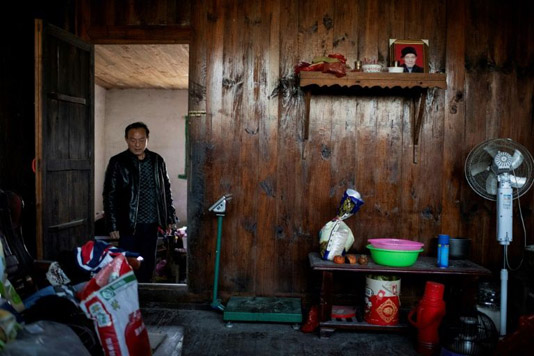BEIJING, Feb 24, 2021 (BSS/AFP) – China claimed last year it had met a long-trumpeted target of lifting all its people out of extreme poverty.
President Xi Jinping heralded a “major victory” that the Chinese Communist Party had wanted to achieve before the centenary of its founding in 2021.
But what do the numbers say?
– What counts as poverty? –
China’s poverty line is around $2.30 a day — slightly above the World Bank’s lowest threshold of $1.90 but below what is recommended for measuring higher income countries.
Local officials have gone door-to-door to determine who is impoverished, measuring by income, housing conditions, lack of medical insurance and whether family members drop out of school.
Some families who own cars or large farm equipment were automatically ruled out of consideration, regardless of their other circumstances.
– What has been achieved? –
China has brought over 800 million people out of extreme poverty, said the World Bank, after launching economic reforms in the 1970s.
Its extreme poverty rate fell from 66.3 percent in 1990 to just 0.3 percent in 2018 — making up for over 60 percent of the decrease in global poverty, according to the Center for Strategic and International Studies.
Nearly everyone now completes compulsory schooling, matching the average level across the world’s high-income countries, and the UN says the child mortality rate also dived in the last two decades.
“For the vast majority of Chinese, life has dramatically improved in the space of a generation,” said World Bank country director Martin Raiser.
– Are China’s claims believable? –
Beijing’s official statistics are often approached with scepticism, and experts say poverty figures do not tell the whole story.
There have been hundreds of thousands of corruption cases linked to poverty work, says University of Western Ontario economics professor Terry Sicular.
That includes local officials who falsified data by classifying friends and family as poor to receive funding.
China’s official poverty line is also low when compared to average household income, Sicular added.
The World Bank recommends the higher benchmark of $5.50 a day to gauge poverty in upper-middle income economies.
Raiser estimates that around 13 percent of China’s population still lives on an income below that level.
– Is it sustainable? –
Funding for poverty alleviation is large in absolute terms but also just “a small percentage of government revenue,” Sicular says.
After macroeconomic growth helped lift living standards over recent decades, Beijing must now look to newer strategies for those on the cusp of the poverty line, she adds.
In many locations, local governments — who have largely borne the burden of improving living standards — are also facing limited fiscal resources.
Many are highly indebted, having invested heavily in infrastructure to tackle poverty, or have benefitted from short-term tax incentives or subsidies.
“Reducing economic vulnerability going forward may require greater focus on investing in skills and helping people move towards higher productivity jobs in the cities,” Raiser added.



